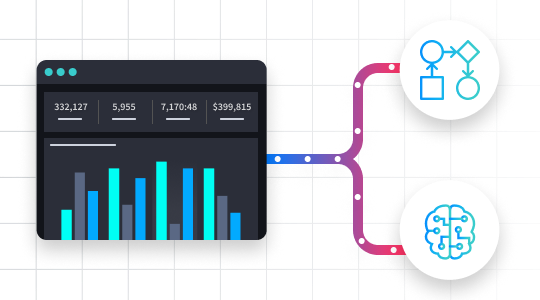The True Cost of GRC Chaos: Compliance Complexity is Breaking GRC Workflows
Every audit starts with good intentions. But somewhere between the spreadsheets, siloed tools, and last-minute evidence pulls, even the most well-meaning teams find themselves drowning in complexity. If that sounds familiar to you, we have some research that will help put things into perspective.
Our latest research report, GRC Chaos: The High Price of Audits and Non-Compliance reveals a humbling truth: compliance processes are breaking under the weight of manual work and fractured tech stacks. As regulations evolve and expectations increase, organizations are falling behind and paying the price in terms of time, resources, and risk.
So, how bad is the compliance chaos? We asked 500 IT and cybersecurity leaders across the US and UK. Here’s what they told us, and what’s really fueling the fire. Keep reading to dive into the first few key findings from the report:
- The compliance burden is getting heavier
- Fragmented tools, fractured processes
- Manual work is costing time and accuracy
Is the Compliance Rulebook Leaving Your Team Outpaced and Overwhelmed?
If staying compliant feels like a race you can’t win, it’s because today’s rulebooks are growing faster than most teams can keep up. According to our research report:
- 96% of organizations report that it’s a challenge to stay up to date with the increasing number of regulations applicable to their industry.
If you dig a little deeper into the research, you’ll see just how widespread the struggle is:
- Over 70% of respondents said staying current with regulations is moderately challenging.
- Nearly one-third described staying current with regulations as “extremely” challenging.
- Only 29% of organizations say their compliance programs consistently meet internal and regulatory standards.
The rest? They’re either missing the mark occasionally or falling significantly behind. Most teams are operating in a gray area, where mistakes are high and the margin for error is shrinking rapidly. Unfortunately, this type of uncertainty has very real and costly consequences. Over half of respondents have received compliance warnings or fines.
When the cost of falling short includes financial penalties, reputational damage, and increased scrutiny, “just getting by” is no longer sustainable for security teams.
Your Tech Stack Shouldn’t Sabotage Your Audit
When your audit tools don’t talk to each other, the result is chaos. Preparing for audits should be a structured, repeatable process. Instead, it’s chaos by disjointed tech stacks.
- 92% of organizations rely on three or more tools to gather audit evidence, and some use more than 15.
This level of tool sprawl doesn’t only slow things down, it complicates everything from documentation to data integrity. According to our research report, respondents reported using a wide mix of legacy systems, spreadsheets, GRC point solutions, and communication tools. And none of these were designed to work seamlessly together.
The result? Siloed tools and duplicated effort.
It gets worse. Only 39% of the evidence-gathering process is automated. This means the majority of these tasks are still being handled manually. This is leaving teams in a constant scramble to verify system configurations, track task status, and cross-reference data across disparate systems.
Check out some of the manual tasks below:
- 54% manually verify system configurations against compliance requirements.
- 54% track and update compliance tasks by hand.
- 50% cross-reference data across multiple systems.
- Almost half of the respondents are still compiling spreadsheets and filling out checklists.
When evidence lives in screenshots, inboxes, and spreadsheets, your accuracy suffers, and so does your audit readiness.
Death by a Thousand Tasks: The High Price of Manual Audits
Compliance audits are already high-stakes. Add in hours of manual work, and the pressure skyrockets. This is true for over half of the respondents.
- 54% spend more than five hours per week on manual tasks related to audits.
- And 14% report spending more than ten hours weekly on manual tasks related to audits.
But the cost isn’t just time, it’s the quality of work. 62% of respondents say their evidence-gathering process is at least occasionally error-prone, with nearly one in five reporting frequent issues. When every inaccurate report or missing artifact increases the risk of non-compliance, manual mistakes are more than just a nuisance, they’re a liability.
Teams also shared a wide range of audit challenges. Check them out below:
- 27% struggle to maintain up-to-date documentation.
- 21% said understanding requirements is a major barrier.
- 18% pointed to limited resources or difficulty locating the right evidence.
And no surprise here, but even coordinating with an auditor made the list. Manual work doesn’t just slow you down, it compounds every challenge across the audit lifecycle, from preparation to reporting. It’s safe to say that the data provides a clear picture: audit and compliance workflows require a smarter, more sustainable approach.
Solve Compliance Complexity with Swimlane Compliance Audit Readiness (CAR) Solution
Swimlane’s Compliance Audit Readiness (CAR) Solution gives teams the structure, scale, and speed they need to simplify audits and reduce risk. Built on Swimlane Turbine, CAR automates compliance control mapping, streamlines audit evidence gathering and provides real-time risk-based reporting. This helps facilitate collaboration between security and GRC teams with reduced friction and fewer spreadsheets.
It’s time to move beyond manual and take control of compliance chaos. Ready to see how?

Request a demo
If you haven’t had the chance to explore Swimlane Turbine yet, request a demo.


